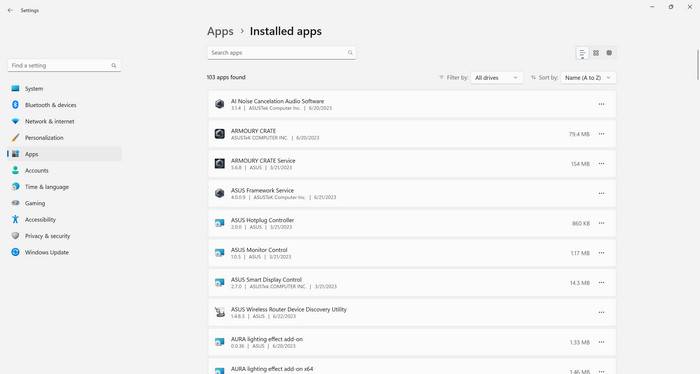Adobe Creative Cloud is a suite of software applications and services offered by Adobe Inc. that provides users with access to a wide range of creative tools for graphic design, video editing, web development, and more. It includes popular applications like Photoshop, Illustrator, Premiere Pro, and InDesign, among others. While Adobe Creative Cloud offers numerous benefits to creative professionals and enthusiasts, some users may wonder if they should remove it from their systems. In this article, we will explore what Adobe Creative Cloud is, its advantages and disadvantages, and help you make an informed decision about whether or not to remove it.

What is Adobe Creative Cloud?
Adobe Creative Cloud is a subscription-based service that provides users with access to a collection of Adobe software applications and services. Instead of purchasing individual licenses for each software, users pay a monthly or annual fee to access the entire suite of Adobe applications. This subscription model allows users to stay up-to-date with the latest versions of the software and provides access to additional features and services.
Adobe Creative Cloud offers a wide range of applications for various creative disciplines, including graphic design, video editing, web development, photography, and more. Some of the most popular applications in the suite include:
- Photoshop: A powerful image editing and manipulation tool used by photographers, graphic designers, and digital artists.
- Illustrator: A vector graphics editor used for creating illustrations, logos, icons, and other scalable graphics.
- Premiere Pro: A video editing software used by professionals to edit and produce high-quality videos.
- InDesign: A desktop publishing software used for creating print and digital publications, such as magazines, brochures, and eBooks.
- After Effects: A motion graphics and visual effects software used in video post-production.
Advantages of Adobe Creative Cloud
Adobe Creative Cloud offers several advantages that make it a popular choice among creative professionals:
- Access to the latest software: With a Creative Cloud subscription, users have access to the latest versions of Adobe software as soon as they are released. This ensures that users can take advantage of new features, bug fixes, and performance improvements.
- Regular updates and improvements: Adobe frequently updates its software to address security vulnerabilities, add new features, and improve performance. Creative Cloud subscribers receive these updates automatically, ensuring they always have access to the most up-to-date versions of the software.
- Cloud storage and collaboration: Creative Cloud includes cloud storage, allowing users to store and access their files from anywhere. It also offers collaboration features that enable multiple users to work on the same project simultaneously, making it easier for teams to collaborate and share their work.
- Access to additional services: In addition to the software applications, Creative Cloud subscribers also gain access to additional services like Adobe Fonts, Adobe Stock, and Adobe Portfolio. These services provide users with a wide range of fonts, stock images, and a platform to showcase their work.
Disadvantages of Adobe Creative Cloud
While Adobe Creative Cloud offers numerous benefits, there are also some potential drawbacks to consider:
- Subscription cost: The monthly or annual subscription cost of Adobe Creative Cloud can be a significant expense, especially for individuals or small businesses on a tight budget. However, it is important to weigh the cost against the value and benefits provided by the software.
- Internet dependency: Adobe Creative Cloud requires an internet connection for installation, activation, and regular software updates. This can be a limitation for users in areas with unreliable or limited internet access.
- Learning curve: Adobe software applications, especially the more advanced ones like Photoshop and Premiere Pro, have a steep learning curve. It may take some time and effort to become proficient in using these tools effectively.
- Storage limitations: While Creative Cloud offers cloud storage, the amount of storage provided depends on the subscription plan. Users with large files or extensive projects may need to purchase additional storage, which can add to the overall cost.
Should I Remove Adobe Creative Cloud?
Whether or not you should remove Adobe Creative Cloud from your system depends on your specific needs and circumstances. Here are a few factors to consider:
- Usage frequency: If you use Adobe software applications frequently and rely on their features for your work or hobbies, it is likely beneficial to keep Creative Cloud installed. The regular updates and access to the latest features can enhance your productivity and creativity.
- Subscription cost: Evaluate the cost of the Creative Cloud subscription against the value you derive from the software. If you find that you are not utilizing the applications enough to justify the cost, it may be worth considering alternative options.
- Alternative software: Assess whether there are alternative software applications available that can meet your needs. There are several free or lower-cost alternatives to Adobe software that may be suitable for your specific requirements.
- Uninstalling Adobe Creative Cloud: If you decide to remove Adobe Creative Cloud from your system, it is recommended to use a reliable uninstallation tool like Revo Uninstaller Free. This tool ensures that all associated files and registry entries are properly removed, minimizing the chances of any leftover traces.
Summary
Adobe Creative Cloud is a comprehensive suite of software applications and services that provides users with access to a wide range of creative tools. It offers numerous advantages, including access to the latest software, regular updates, cloud storage, and collaboration features. However, there are also potential disadvantages, such as the subscription cost, internet dependency, and storage limitations.
Whether or not to remove Adobe Creative Cloud depends on your specific needs, usage frequency, and budget. Evaluate the value you derive from the software and consider alternative options if necessary. If you decide to uninstall Creative Cloud, use a reliable uninstallation tool like Revo Uninstaller Free to ensure a clean removal.










